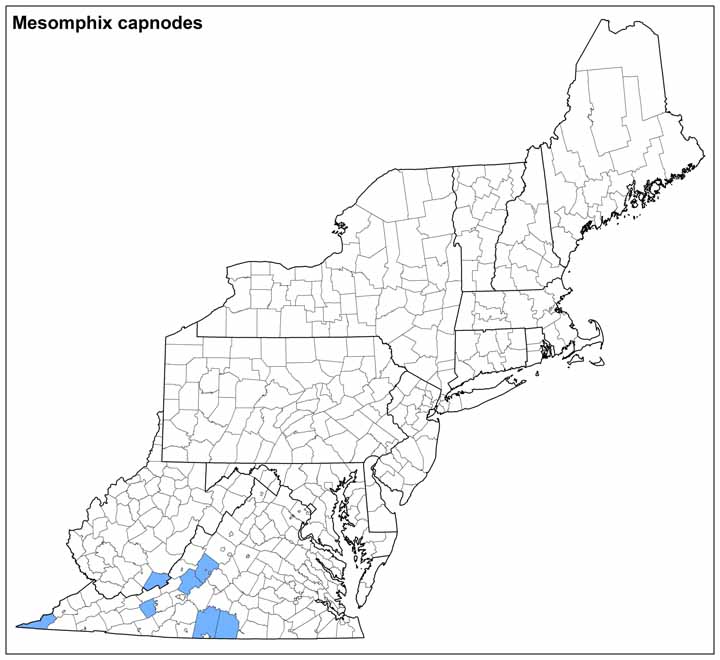Land Snails
.jpg)
Photo(s): Mesomphix capnodes shell images © Larry Watrous.
Click photo(s) to enlarge.
Mesomphix capnodes (W. G. Binney, 1857)
Family: Zonitidae
Common name: Dusky Button
Identification
Width: 28-35 mm
Height: 17.5–26.0 mm
Whorls: 5
Mesomphix capnodes is large, and has a shell shaped like many other species in its family, with a low apex, thin lip, rounded whorls and a large outer whorl. It has a small umbilicus, and a big downward-tilting aperture, two features that are more pronounced here than in the similar shell of M. cupreus. Its most important distinguishing feature is its shell microsculpture – fine spiral threads that are cross-hatched to create rows of small bumps or papillae. The shell may have a greenish tint, darkening toward the lip. The height of the apex may vary within a population (Dourson, 2015).
Ecology
This species is a calciphile and can be found under leaf litter in upland forests (Hubricht, 1985).
Taxonomy
Synonyms for M. capnodes are: Helix kopnodes, Mesomphix cupreus ozarkensis, M. c. miktus, Omphalina kopnodes, and Zonites capnodes.
Distribution
Mesomphix capnodes is mainly an animal of southern hill lands, concentrated most heavily in and around the Arkansas-Oklahoma border and in Alabama and Tennessee. In Virginia its reports are scattered in the west, and some are suspect due to this species' similarity to its relatives.
Conservation
NatureServe Global Rank: G5, Secure
NatureServe State Rank: Virginia, S3, Vulnerable; West Virginia, SH, Historic
Greg Kimber, Ken Hotopp 7/2012
Range Map (click to enlarge)


